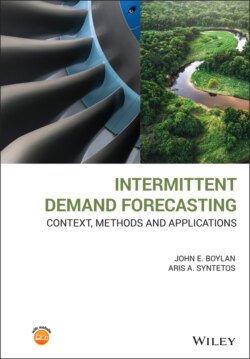Читать книгу Intermittent Demand Forecasting - John E. Boylan - Страница 92
3.8 Chapter Summary
ОглавлениеIn this chapter, we started by arguing for a more analytical approach to inventory management and not relying on ad hoc rules. Nevertheless, there is still room for managerial judgement. In fact, such judgement is essential for
1 Selecting an aggregate service measure (or set of measures) against which performance will be monitored.
2 Selecting an appropriate service measure at SKU level, which best reflects the costs to the organisation of backordering and not satisfying demand from stock.
3 Deciding on the best target service levels.
Judgement may also be exercised at the level of the individual SKU, by making adjustments to demand forecasts (to be discussed further in Chapter 10) or by making adjustments to orders, without adjusting demand forecasts. These adjustments can be beneficial in certain circumstances but may also worsen performance. If such adjustments are frequent, then ongoing assessments should be made to check that performance is being improved.
We have also reviewed issues in calculating cycle service levels and fill rates. Some of these issues are quite technical but it is important that they are resolved and the measures are calculated correctly, so that inventories are set at the right levels.
The usual calculation for cycle service levels, as given in many textbooks, has some limitations for intermittent demand. It will lead to an inflated assessment of customer service, as it will count a review interval with no stockouts as a success even if there has been no demand. For intermittent demand, we saw how an alternative measure can be calculated, based on a restriction to those review intervals in which there has been some demand.
The traditional calculation for fill rates is an approximation, as it can double count some stockouts. This can lead to an underestimate of the fill rate that may, in turn, lead to excessive stocks being held. The double counting problem is particularly concerning for SKUs with lumpy demand patterns. In fact, it is an issue for particularly volatile non‐intermittent demand as well. The formulae of Sobel (2004) and Zhang and Zhang (2007), although somewhat more complicated, can address this issue and give more reliable fill rate calculations.
The calculations for both the cycle service level and the fill rate rely on demand probabilities. These may be over the review interval, the lead time, or the whole protection interval, and can be found from the probabilities of demand in a single period. The estimation of these probabilities is central to supply chain forecasting. Over the next two chapters, we examine different probability distributions that can be used to represent demand, and then move on to their forecasting requirements.
